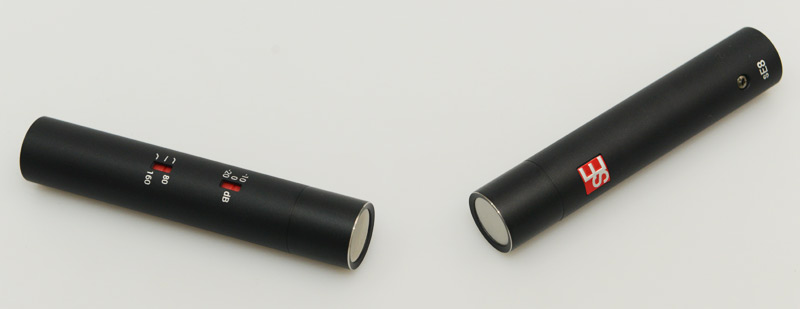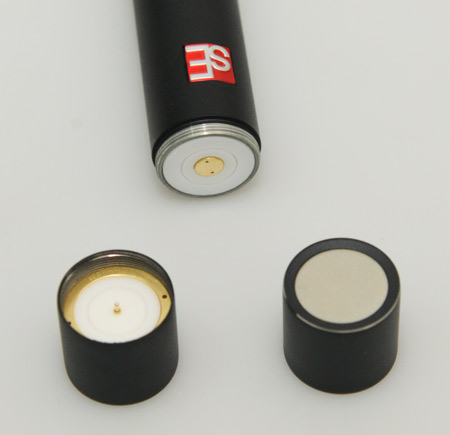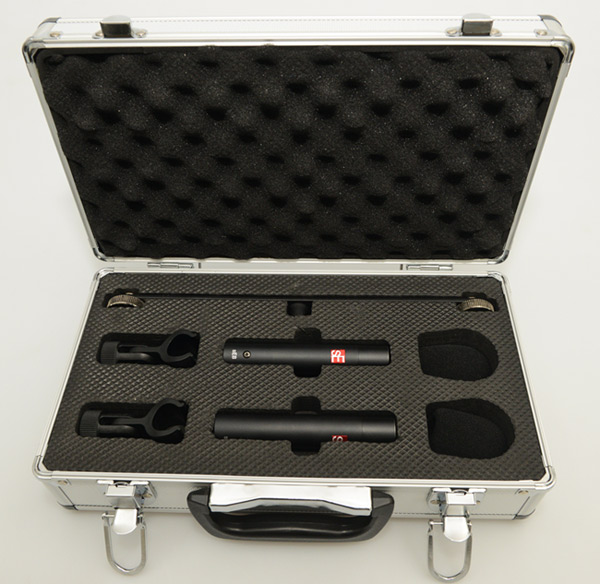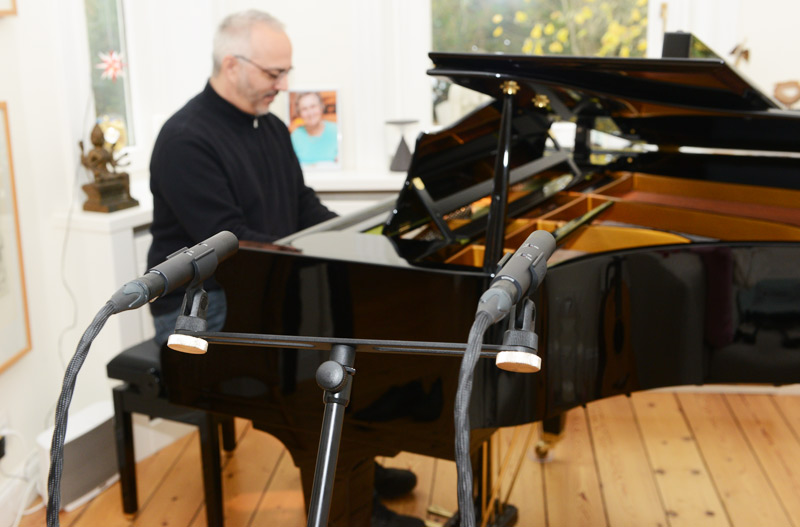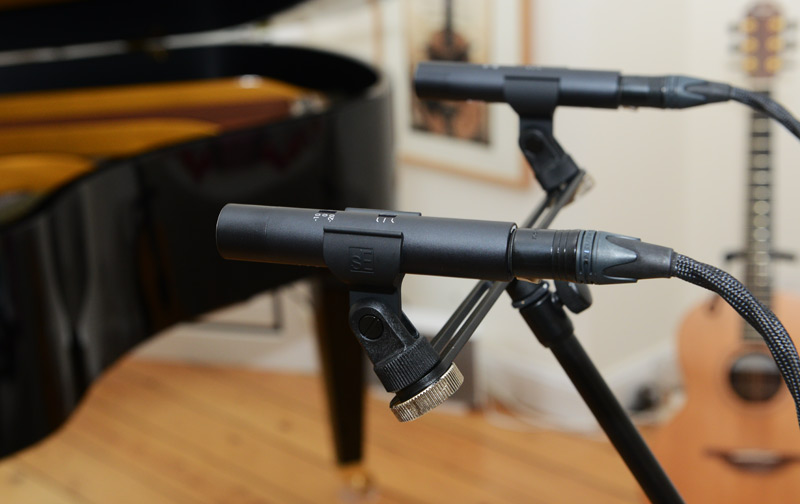sE Electronics sE8 omni
Condenser Microphone With Omnidirectional Characteristics
Author and photos: Peter Kaminski
Translation: Andrew Levine
A while ago we testing the sE8 cardioid microphone (review published in our German proaudiio.de issue only). Since November 2020 the sE8 is available with an omnidirectional capsule. We were excited to take it for a spin, especially as the cardioid version managed to win us over easily.
Omnidirectional Characteristic
Before we dive in let us examine the omnidirectional characteristic in general. Whenever you open the microphone closet in a recording studio, what do you find? Right! It is primarily cardioid mics plus a few switchable ones. Maybe a handful of true omnidirectional capsules, which are almost as rare as bidirectional or true figure of eight microphones. This is unfortunate as these designs offer quite a few advantages. Which are?
A capsule with true omnidirectional characteristic is a so called pressure transducer. Changes in air pressure result in movement of the diaphragm. Ideally the capsule would be very small, but that would result in a higher self noise and decreased signal-noise ratio. In the practical implementation the capsules are larger which results in increased directivity with increasing frequency. On the other hand omnidirectional capsules are very good transducers even at very low frequencies and do not exhibit the proximity effect of cardioid designs, where lower frequencies are augmented at short distances to the sound source. These effects are clearly audible when comparing omnidirectional and cardioid capsules by ear.
A disadvantage of omnidirectional mics is that they have to be closer to the sound source than cardioids when maintaining the same amount of ambient pickup. This is because the non-directional characteristic leads to an even distribution of direct versus reflected sound. Of course especially in complex setups like bands or orchestras there is more crosstalk when using omnidirectional capsules so they have to be placed closer to the source than a cardioid mic if you want to minimize the presence of “unintended” sonic components.
The one question remaining is in what way a microphone with switchable characteristic is different from a solely omnidirectional capsule. Simple answer: switchable characteristic mics are usually based on a dual-capsule design where two cardioid capsules are mounted back to back. So the characteristics of a dual pressure gradient transducer is not the same like a pressure transducer.
Specs
The interesting thing about the sE omni capsule is that it is a true condenser rather than a pre-polarized electret condenser, the likes of which are even found in quite a few pricey small diaphragm microphones. Electret condensers impose limits upon the geometrical uniformity of the electrical field. By the way the omnidirectional capsule of the sE8 omni was developed in house and is also being manufactured there.
The microphone has a diameter of 0.91’’ (23mm) and a length of 120mm. The capsule with a diameter of 20mm places the sE8 in the group of slightly larger small diaphragm microphones.
The microphone preamplifier of the sE8 omni is identical to that of the sE8 and sports the usual 3pin XLR-socket. It requires 48V phantom power and exhibits a current draw of 2.7mA. The output is transformerless as the signal is electronically balanced.
The module sports a recessed switch to enable a low cut filter at 80 or 160Hz as well as a damping switch for 10 or 20dB or attenuation (see image below). The nominal output impedance is rated at 110Ohm.
Without attenuation the maximal sound pressure level (@ 0.5% THD) is specified at 141dB and with maximal damping engaged at 161dB. That should be enough for even the most extreme imaginable situation. The Equivalent Input Noise (EIN) is specified as 15dB (A-weighted) and the Signal Noise Ratio (SNR) at 79dB.
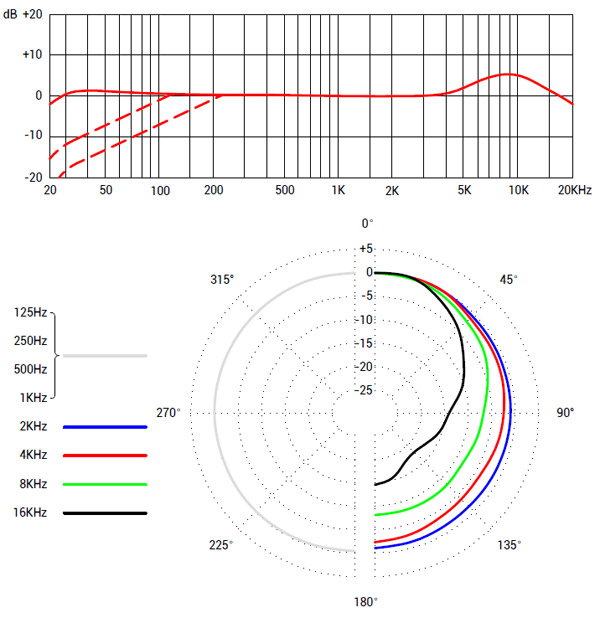
sE specifies the frequency range between 20Hz and 20kHz and the frequency plot (at 180 degree incidence) exhibits the usual bump (about 5dB) around 9kHz.
Omnidirectional capsules (of a non-zero capsule diameter) exhibit increased directionality with increasing frequency. The question is always where it begins and how strong it is. As off-axis sound is picked up to a much higher degree than with cardioid designs it is very important that there is minimal coloration.
When you examine the polar diagram of the sE8 omni at various frequencies (see plot above) you can see that directivity is minimally effected. At an incidence of 180 degrees the SPL is attenuated by 2dB at 4kHz and by 8dB at 8kHz. Of course it is always a question of how much smoothing has been applied to the data but there is no indication of excessive waviness on the plot. This suggests a very good off-axis behavior of the sE8 omni. As always, let the ear be the final arbiter.
Product Variants And Extras
The sE8 omni is offered in two variants: a stereo set comprised of two preamplifier bodies and two matched sE8 omni capsules, windscreen, microphone clamps with adapters for small and large threaded tripods and a stereo bar with a max distance of 30cm. All of it nicely packed in a foam lined aluminum case for safe transport. Whoever already owns the sE8 (cardioid) stereo set will be happy to know that there is a second option comprised of only two matched sE8 omni capsules.
The serial numbers of the sE8 microphones can be found on the preamp. A matched pair is distinguished by the letter “A” respective “B” at the end. With the introduction of the sE8 omni capsules you can now find the name, type of the capsule as well as the serial number on the inside of the capsule.
Interview
We had the opportunity to pose a few questions to Thomas Stubics, product manager at sE Electronics. Here is the interview which offers inside information about the development and technology of the sE8 omni.
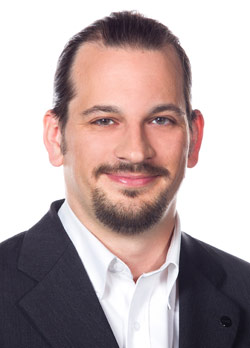
proaudio.tech: It doesn't happen often that a manufacturer launches an omnidirectional capsule. Why is that?
Thomas Stubics: sE Electronics has gained a lot of attention recently. Their products have been used by many sound engineers working for Rock, Pop and Metal artists like Justin Timberlake, James LaBrie (Dream Theater), Billie Eilish, Billy Gibbons (ZZ Top), Arch Enemy, In Flames, Milky Chance and Adel Tawil. Interestingly, we also have some roots in classical music. Our founder, Siwei Zou, who studied at the California State University started his musical career as a classically trained bassoon player. He also worked as bassoon player, conductor and composer for the Shanghai Symphony Orchestra. Our small diaphragm condenser microphone sE8 has become very popular and big in demand. Moreover, we received a lot of requests for an omnidirectional version. A further motivation comes from my own beginnings in recording. When you are a young student, facing a limited budget, and just have started your career it is difficult to get access to a good pair of omnidirectional capsules. Especially when recording ensembles, choirs or a complete orchestra, the performance and quality of the mics play a dominant role. Suitable microphones used to be very expensive. At sE, we are blending the line between professional and affordable. The sE8 has become the choice of professionals without taking an arm and a leg.
proaudio.tech: The usual suspects for recording classical music are manufactured by well-known brands. Your offering seems to be much more attractive. What are the compromises?
Thomas Stubics: At sE, we are developing and hand-crafting our very own capsules. There are just a few companies that are still doing this. We see a lot of OEM these days where products are bought off the shelf and are just rebranded. Thanks to our very own engineering team in in-house manufacturing, we can make use of the latest technologies, ensure best possible quality and achieve a great value for the money. We are a family-owned company and everybody is trying his very best to create and build impressive products every day. The key to the success of our sE8 microphone is the true condenser technology and the design of the high-precision backplate. Every part and every step of production required high attention to detail. A great product is the result of many details and you can't afford any flaws. Moreover, the new sE8 has already been proven. As reported here on Proaudio, several prototypes have been tested on the "World of Hans Zimmer" Tour last year.
proaudio.tech: Most condenser microphones are back-electret designs. How come sE is using the True-Condenser-Technology that can be found only on very expensive large diaphragm condenser microphones?
Thomas Stubics: Interestingly, back-electret designs can be found also on products with a high price tag, however, there are some limitations in the consistency of the electric field. That's we are using the true-condenser technology which enables us to achieve much better results. Tolerances are lower and the frequency response is much more smooth and balanced. Our demanding customers appreciate the great performance and allow them to use compression and any other signal processing at ease because there are no harsh frequencies. Moreover, on small diaphragm microphones, the low end sometimes gains not enough attention. The true-condenser technology helps us a lot to get stunning results and makes any voice or instrument sound even more realistic and three-dimensional.
proaudio.tech: The high dynamic range and the low noise is very impressive. Isn't that already over-reaching the customer needs?
Thomas Stubics: Especially when recording details like pizzicato violins or for room miking in a concert hall, noise can become an issue. Therefore, we carefully selected discrete components and worked on a sophisticated electronic design. Every detail matters. It enables us to achieve an excellent performance that can be found only on much more expensive products.
On the other side, there are some applications where a high SPL capability is key i.e. near-field miking of an opera singer, drums or some brass instruments. When the attenuation filter is enabled, the maximum SPL of 161 dBspl can be achieved. Of course, one could think this would be the perfect choice for miking a jet but keep in mind that the peak levels of most instruments are about 10 to 16 dB higher that the effective SPL level. When recording percussions or drums, this factor is even higher. Moreover, in such applications it is easy to overload an entry-level preamp or affordable audio interface. There are some limitations and they hardly have an attenuation pad. Regardless of this, it is always best to prevent distortion at the very beginning of the signal chain. That's why the sE8 is offering a 10 and a 20 dB attenuation pad that is placed before the signal hits the first amplification stage of the mic.
Moreover, we are trying to have just a few amplification stages to keep the signal as pristine as possible. This also helps to minimize effects on the low end of the frequency response and using big, high-quality coupling capacitors helps also a lot.
sE8 omni in use
Our testing took place at the studio of Alphaton Musikverlag in Wentorf near Hamburg. Thanks to Gerd Gerdes, known for his many film music compositions as well as Erol Ergün for his support in testing the sE8 omni. All recordings were made in 24bit 96kHz resolution and later evaluated by the editorial staff.
At this point I would like to repeat that the sE8 omnis, like their predecessors, the cardioid sE8’s really are as high-end as they look. Even more so when you consider their price.
The included stereo bar has a usable distance of 30cm. I personally prefer between 40 and 45cm to achieve a useful stereophonic pickup angle but there are quite a few usable distancers.
We recorded grand piano and acoustic guitar in a session with the sE8 omnis and other contenders. What is immediately obvious is the excellent bass response. It allows for a good balance between bass, mids and highs. Another point that stuck out was the excellent transient response, especially when miking acoustic guitar. To test that further we recorded some percussive sounds (like jangling silverware). Yes, the sE8 omnis are also very suitable for percussion.
Self noise of the microphones is extremely low. Even when comparing the sE8 omnis with significantly higher priced contenders they cut a fine figure. If you need a quieter mic you easily have to invest a four-figure sum. Dynamic range and max SPL is excellent and get into an area rarely encountered in a practical setting and seldom found even with much higher priced alternatives.
I myself am a great proponent of omnidirectional transducers. When I heard that sE Electronics had released the sE8 as omni I was very excited, having been delighted by the cardioid sE8’s. I can now say I am equally happy about the sonic charactistics of the sE8 omnis.
I had the chance to meet Carsten Kümmel on multiple occasions during the “World of Hans Zimmer Live-Tour” and seen the sE8 omnis in practical use. This is what Carsten told me: “The sE8 omnis were used on the World of Hans Zimmer Live-Tour for the low frequency percussion like GranCassa and TamTam due to their transparent LF response. But not only there but on several other orchestral productions for double basses and even as a main microphone.”
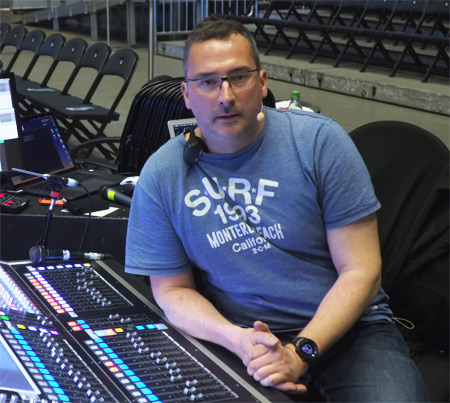
We also did capture some video footage of the use of several sE Electronics microphones during the World of Hans Zimmer Live-Tour which can be seen at proaudio.tv: https://youtu.be/DZP1cbVkYSs
Bottom line
The list price of the sE Electronics sE8 omni as a stereo set with all extras is below 480 Euros. The sE8 omni capsule as matched stereo pair without preamps sells for around 240 Euros. Build quality and sound is outstanding, especially at this price point, allowing even low end budget studios to augment their arsenal with these high quality pickups.
I would also like to take the opportunity to recommend everyone try using omnidirectional microphones instead of grabbing cardioids by default. You might be surprised about the difference in sound quality you’ll be able to capture. And even if they are not a mic you can use everywhere I am certain you will find many opportunities where they allow your recording skills to really shine.
 How to resolve AdBlock issue?
How to resolve AdBlock issue? 